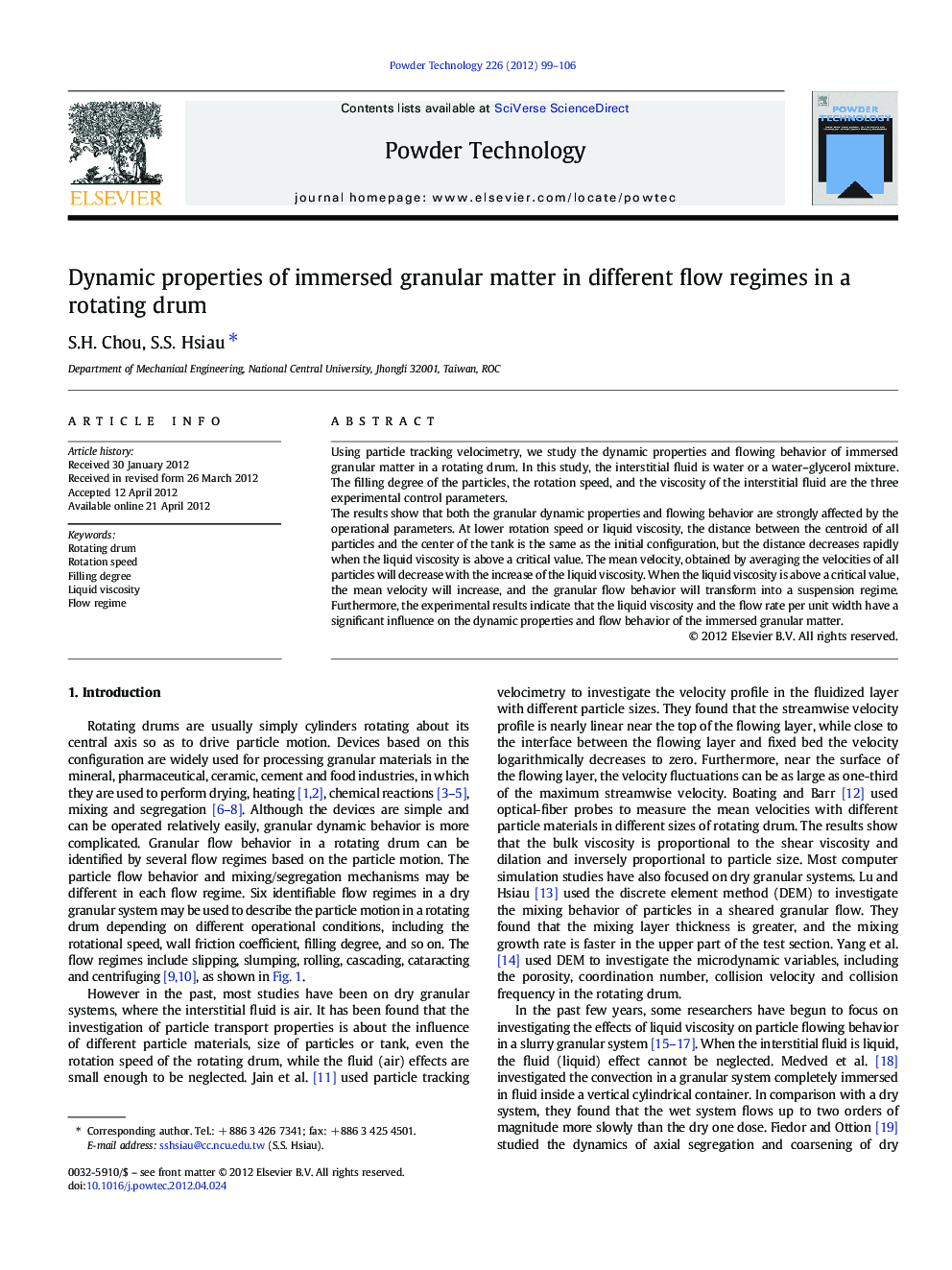| Article ID | Journal | Published Year | Pages | File Type |
|---|---|---|---|---|
| 237095 | Powder Technology | 2012 | 8 Pages |
Using particle tracking velocimetry, we study the dynamic properties and flowing behavior of immersed granular matter in a rotating drum. In this study, the interstitial fluid is water or a water–glycerol mixture. The filling degree of the particles, the rotation speed, and the viscosity of the interstitial fluid are the three experimental control parameters.The results show that both the granular dynamic properties and flowing behavior are strongly affected by the operational parameters. At lower rotation speed or liquid viscosity, the distance between the centroid of all particles and the center of the tank is the same as the initial configuration, but the distance decreases rapidly when the liquid viscosity is above a critical value. The mean velocity, obtained by averaging the velocities of all particles will decrease with the increase of the liquid viscosity. When the liquid viscosity is above a critical value, the mean velocity will increase, and the granular flow behavior will transform into a suspension regime. Furthermore, the experimental results indicate that the liquid viscosity and the flow rate per unit width have a significant influence on the dynamic properties and flow behavior of the immersed granular matter.
Graphical abstractThe transverse motion behavior of the granular materials in a rotating drum can be conveniently represented in the bed behavior diagram. It provides the users of rotating drums with the possibility to decide on the flow behavior of immersed granular bed material used, by the parameters of liquid viscosity, filling degree and rotation speed.Figure optionsDownload full-size imageDownload as PowerPoint slideHighlights► The change of inclination angle increases with an increase in the liquid viscosity. ► Mean flow velocity increases when the liquid viscosity is above a critical value. ► The average granular temperature decreases with increasing liquid viscosity. ► Liquid viscosity and the flow rate have a significant influence on flow behavior.
